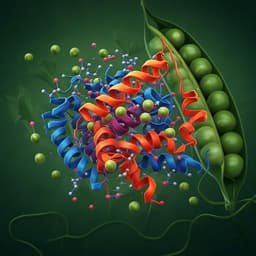
Health and Fitness
Beneficial effects of daytime high-intensity light exposure on daily rhythms, metabolic state and affect
C. Bilu, H. Einat, et al.
This groundbreaking research conducted by Carmel Bilu, Haim Einat, Paul Zimmet, Vicktoria Vishnevskia-Dai, and Noga Kronfeld-Schor reveals that morning exposure to high-intensity light can significantly enhance metabolic health in sand rats. Improve daily rhythms, glucose tolerance, and even reduce anxiety—can the power of light transform our health?
~3 min • Beginner • English
Related Publications
Explore these studies to deepen your understanding of the subject.







